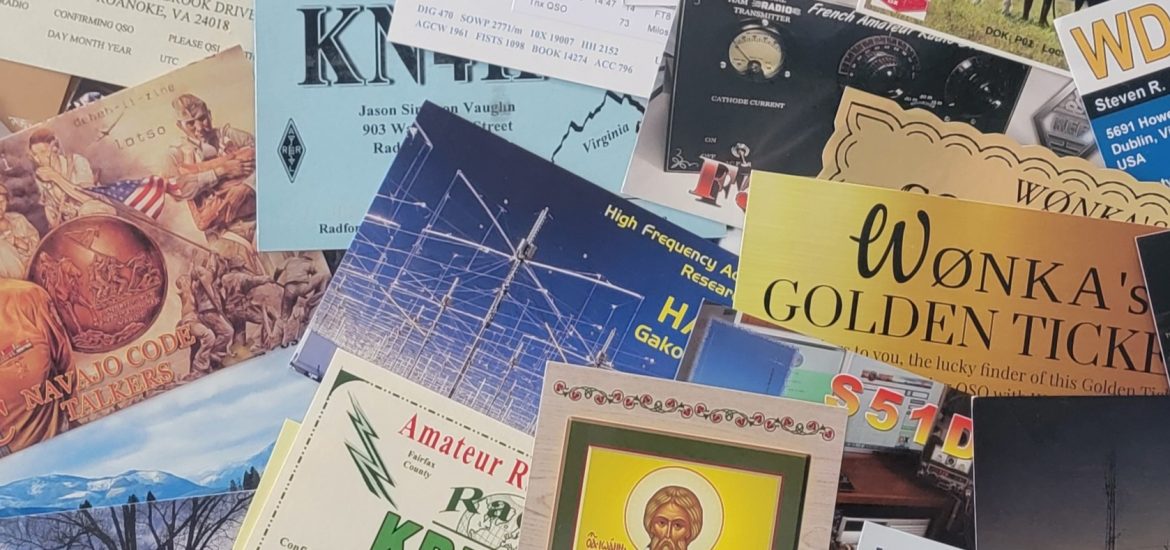The Amateur Radio QSL Bureau system is a cost-effective way to send and receive QSL cards, especially for international contacts. Here’s how it works and how you can use it efficiently.
How the QSL Bureau Works
- Outgoing Bureau (Your Country → Destination Country)
- Each country’s amateur radio society (such as the ARRL in the U.S.) operates an outgoing QSL bureau.
- You send your QSL cards in bulk to your country’s bureau.
- The bureau consolidates and forwards them in large batches to the receiving country’s bureau.
- Incoming Bureau (Destination Country → You)
- The bureau in the receiving country sorts the incoming QSL cards by callsign and distributes them to individual operators.
- If you want to receive cards, you typically need to be a member of your national society and have envelopes or credits on file.
How to Use It to Save Money
- Sending via Bureau: Instead of paying for international postage for each QSL card, you send all your cards in a single package to the bureau, which ships them in bulk, reducing costs.
- Receiving via Bureau: Instead of paying for each incoming card, your bureau holds them until a batch is ready, then forwards them to you.
- Prepay and Register: Some bureaus require you to have an account, envelopes, or funds on file to receive your cards.
Tips for Using the Bureau System Efficiently
- Check Your National Bureau Rules: Each country’s system may have specific guidelines.
- Sort and Address Cards Correctly: Follow bureau guidelines for sorting cards to avoid delays.
- Use the Bureau for DX Cards: This is best for non-time-sensitive QSLing; for rare DX or awards, direct mail may still be preferable.
In the United States, the ARRL (American Radio Relay League) Outgoing QSL Bureau handles outgoing QSL cards, while incoming QSL cards are managed by different Call Area Incoming QSL Bureaus based on the number in your callsign.
U.S. Outgoing QSL Bureau
The ARRL manages all outgoing international QSL cards.
📍 Address for Outgoing Cards:
ARRL Outgoing QSL Service
225 Main Street
Newington, CT 06111-1494, USA
- You must be an ARRL member to use the service.
- Cards must be sorted by DXCC country, not by callsign.
- Fees are charged based on weight (e.g., $2 per ounce).
More details on the ARRL Website here.
U.S. Incoming QSL Bureaus by Callsign Area
The Incoming QSL Bureau is divided into ten regional bureaus, each handling incoming QSLs for specific callsign areas (W1–W0). Below is a list of the bureaus and the call areas they serve:
| Call Area | Bureau Address | Covers Callsigns |
|---|---|---|
| W1 Bureau | W1 QSL Bureau P.O. Box 73 Marlborough, MA 01752 | K1, N1, W1, AA1-AG1 |
| W2 Bureau | W2 QSL Bureau P.O. Box 18 Morris Plains, NJ 07950-0599 | K2, N2, W2, AA2-AG2 |
| W3 Bureau | W3 QSL Bureau P.O. Box 190 Glenelg, MD 21737-0190 | K3, N3, W3, AA3-AG3 |
| W4 Bureau | W4 QSL Bureau Call Box 599 Sterling, VA 20167 | K4, N4, W4, AA4-AG4 |
| W5 Bureau | W5 QSL Bureau P.O. Box 532 Broken Arrow, OK 74013 | K5, N5, W5, AA5-AG5 |
| W6 Bureau | W6 QSL Bureau P.O. Box 7488 Stockton, CA 95267-0488 | K6, N6, W6, AA6-AG6 |
| W7 Bureau | W7 QSL Bureau P.O. Box 1288 Battle Ground, WA 98604-1288 | K7, N7, W7, AA7-AG7 |
| W8 Bureau | W8 QSL Bureau P.O. Box 307 West Chester, OH 45071-0307 | K8, N8, W8, AA8-AG8 |
| W9 Bureau | W9 QSL Bureau P.O. Box 125 Naperville, IL 60566 | K9, N9, W9, AA9-AG9 |
| W0 Bureau | W0 QSL Bureau P.O. Box 907 Florissant, MO 63032 | K0, N0, W0, AA0-AG0 |
💡 Important Notes:
- Your callsign determines your bureau. For example, if your callsign is N5XYZ, your bureau is W5 (Texas, Oklahoma, etc.).
- If you hold multiple callsigns, use the one that corresponds to where most of your QSLs are addressed.
- Prepay for handling costs. Many bureaus require you to send Self-Addressed Stamped Envelopes (SASEs) or prepaid funds to receive cards.
Up to date information can always be found on the ARRL Website here.
